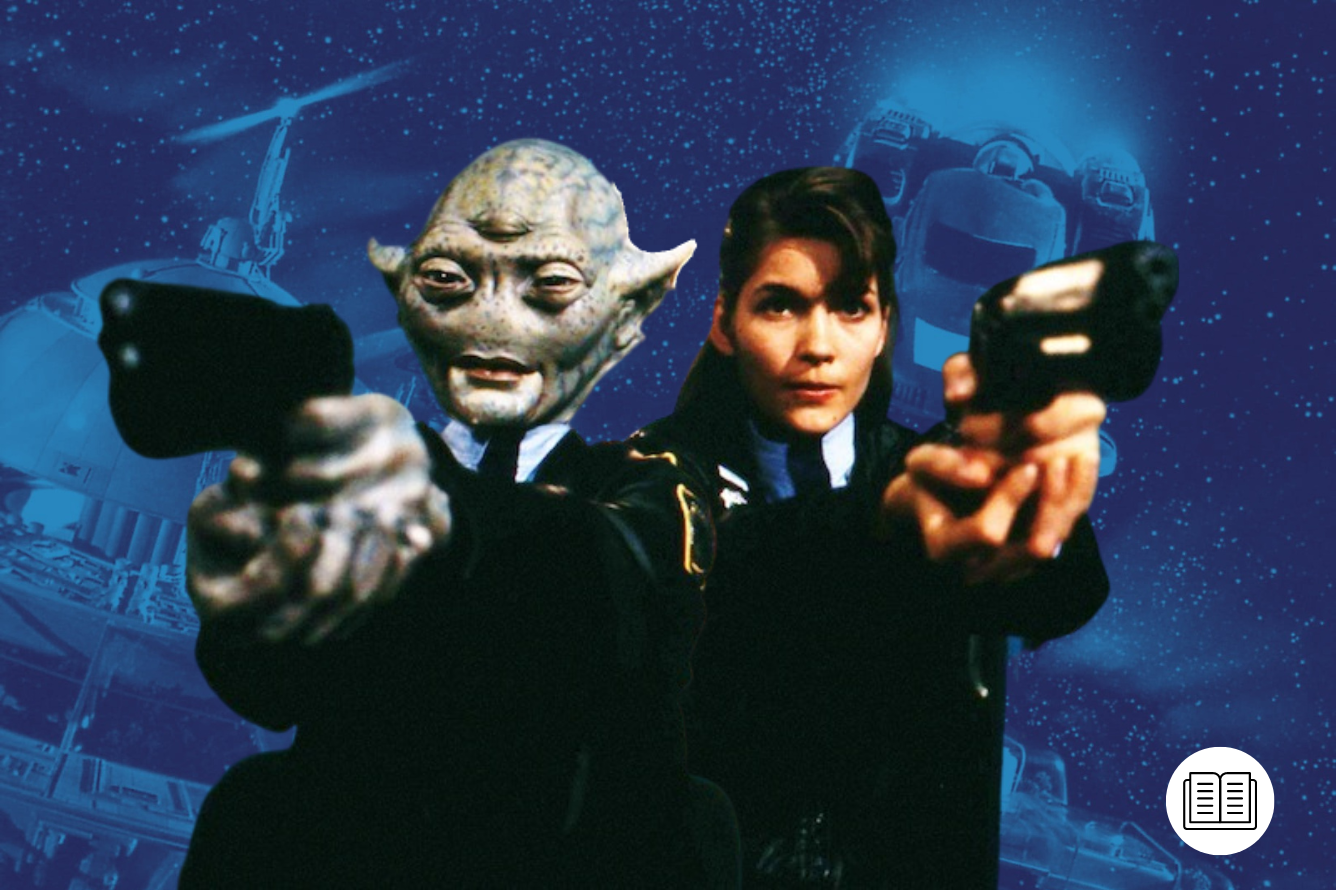In the mid-1980s, Thunderbirds creator Gerry Anderson was making his way back to the U.K. after an unsatisfactory pitching trip to New York when he had a brainwave. If American TV execs weren’t keen on his marionette shows anymore and if police dramas like Hill Street Blues were all the rage, then why not come up with his own?
His answer was Space Police, a 1986 pilot featuring Shane Rimmer (the voice of Scott Tracy) as an aging NYPD cop relocated to an alien planet where he works alongside non-human police and residents. His co-stars were a series of extraterrestrials and shape-shifting robots – a combination of stop-motion animation, puppetry, and prosthetics.
Anderson hawked the idea around for a few years, getting some interest but not enough to turn it into a series. With the show looking increasingly creaky as special effects improved, he decided to reshoot a handful of scenes to try and generate the cash one last time, casting new younger actors (including future Red Dwarf Kochanski Chloë Annett, whose dad was the director) and calling it Space Police: Reloaded.
He also turned to a young special effects technician called Neill Gorton, who at the time was working out of Shepperton Studios with someone who had collaborated on Anderson’s Terrahawks.
“I was working for a company doing a lot of models and props and things,” says Gorton now. “[Space Police: Reloaded] was a teaser and I got commissioned to build an alien for that. I’d been dabbling with this recording system which allowed you to pre-record dialogue and then pre-record all the movements so you could get perfect lip-synch onto an animatronic creature, which was kind of newish at the time. We shot it and everybody was crazy for it. That was that.”

The money to make it was secured, thought to be in the region of $36million then, equivalent to about $63.8m now, or £45m, a massive amount. “The reality was it had a bigger budget than Star Trek,” says Gorton. “Which you can’t really tell by looking at it!
“They never gave me a budget, they just kept on hiring people to build things.”
Casting the Humans, Creating the Aliens
The show was retitled Space Precinct and the actors were recast. The main human beat cops were played by Americans Ted Shackelford (who took over as Brogan) and Rob Youngblood, with Danish actress Simone Bendix as their colleague, while character actors, movement experts, and mime artists like Andy Dawson donned masks and prosthetics to fill out the alien ensemble, sometimes referred to on-set as the ‘background jellyheads’. The production took over two stages at Pinewood, erecting a permanent two-tier set of the main station. “It was a huge operation,” admits Dawson.
“I had been the co-creator of Thunderbirds F.A.B. – the stage show – which had been a big hit at the end of the 80s,” says Dawson. “We knew Gerry quite well and he invited us to be part of the series. More importantly, we could be in these costumes and actually manage to perform.”
While the central conceit of a relocated NYPD policeman remained, as Brogan found himself patrolling Demeter City on the planet Altor in the year 2040, so did the ambition of the special effects.
“Having an animatronic head having a conversation, exchanging dialogue and performing, delivering lines and lots of them, was really new,” says Gorton. “Outside people like Henson’s, no-one had really tackled that much.”
And this was going to be every week. Shooting an episode every ten days meant the production maintained two creature effects shops. Terrahawks alumnus (the late) Richard Gregory was based at Pinewood and charged with creating the two main alien races – the Creons and the Tarns. The former had a slightly fish-like quality with no nose and very wide-set eyes, while the latter boasted an extra eye in the middle of their forehead which they could use to levitate things through telekinesis.
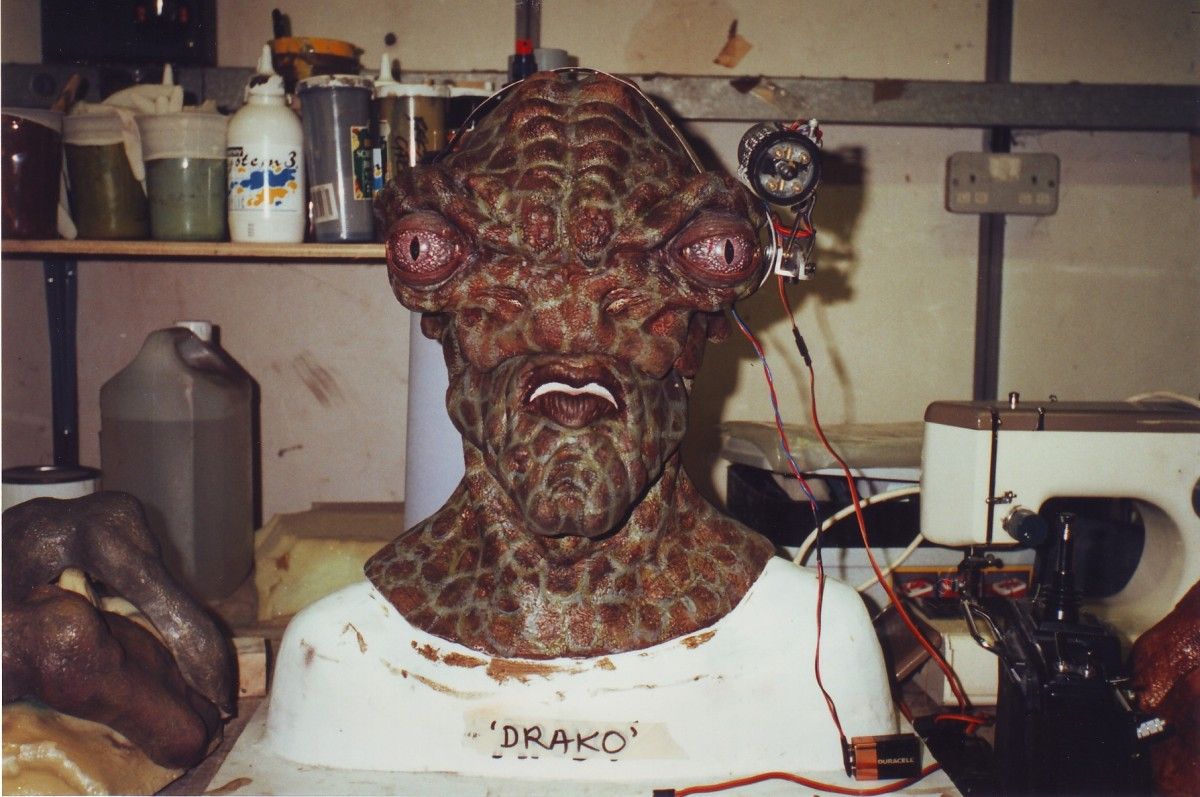
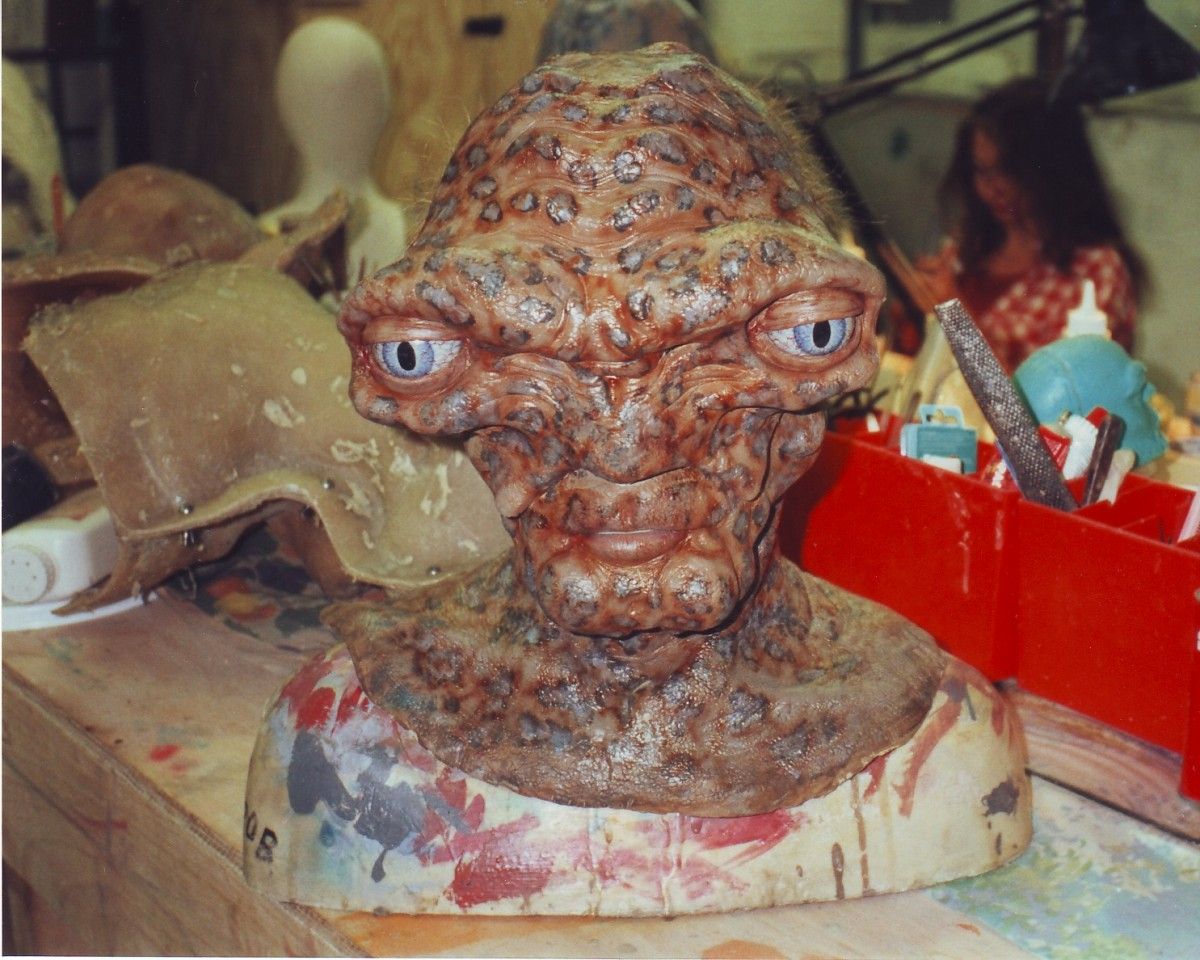
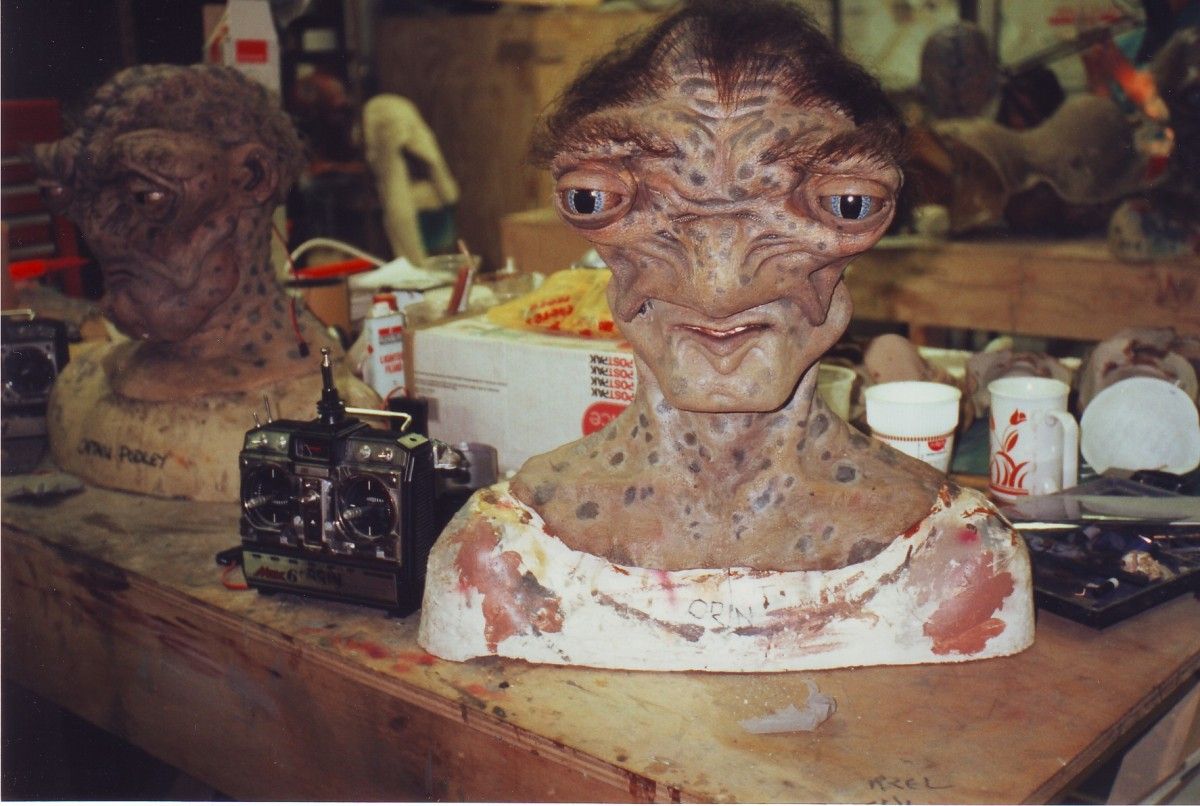
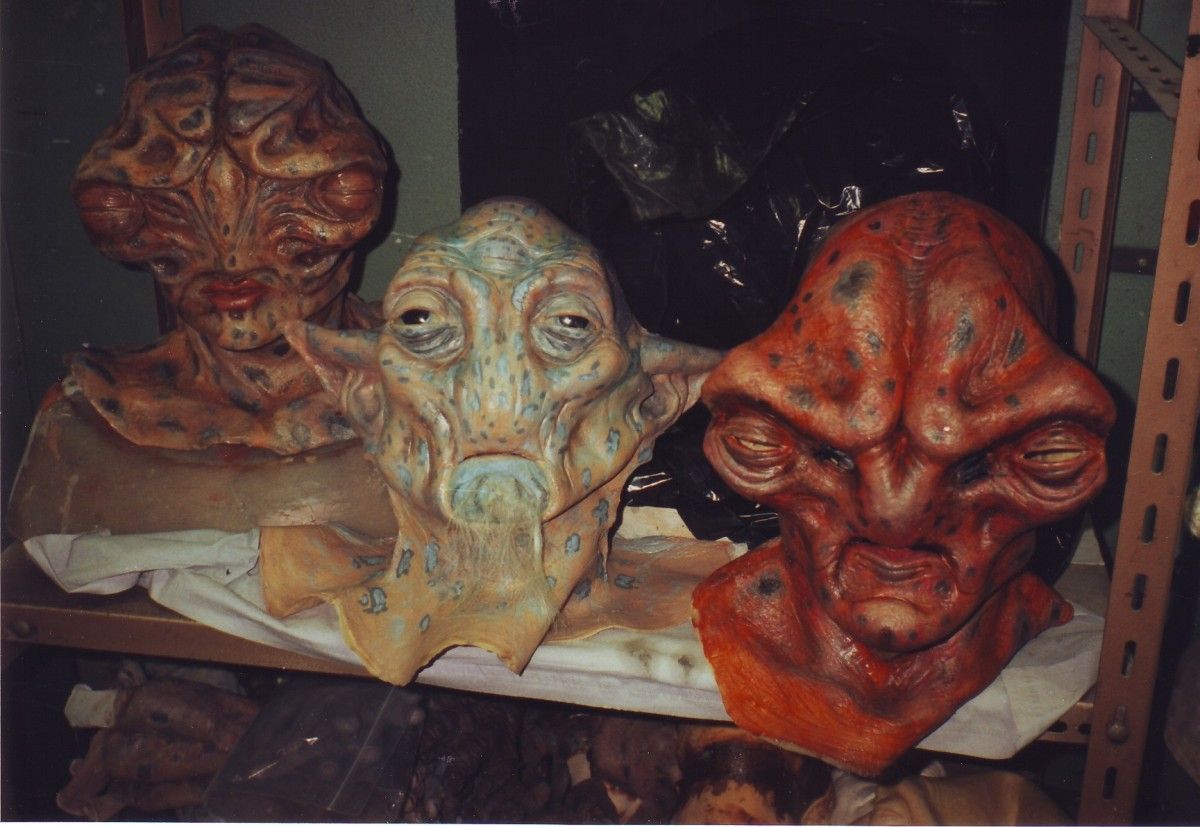
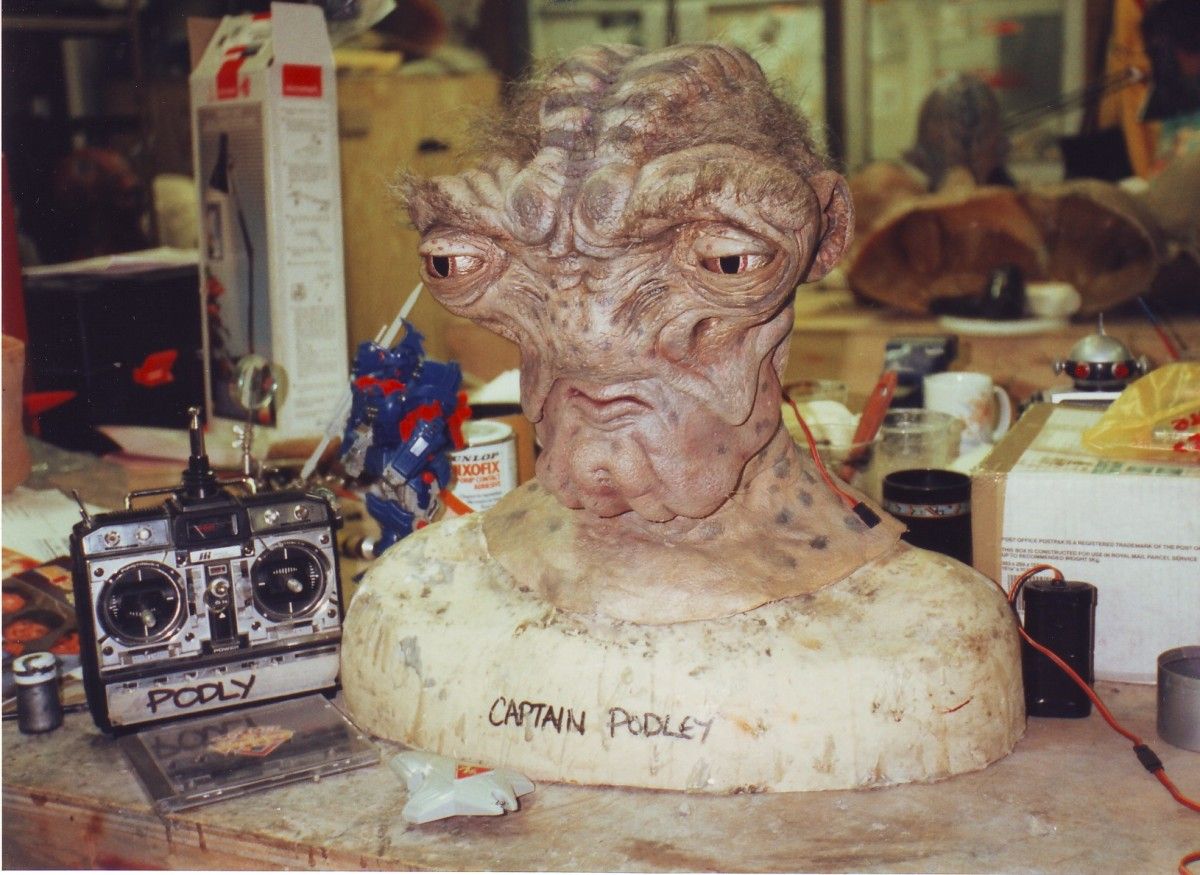
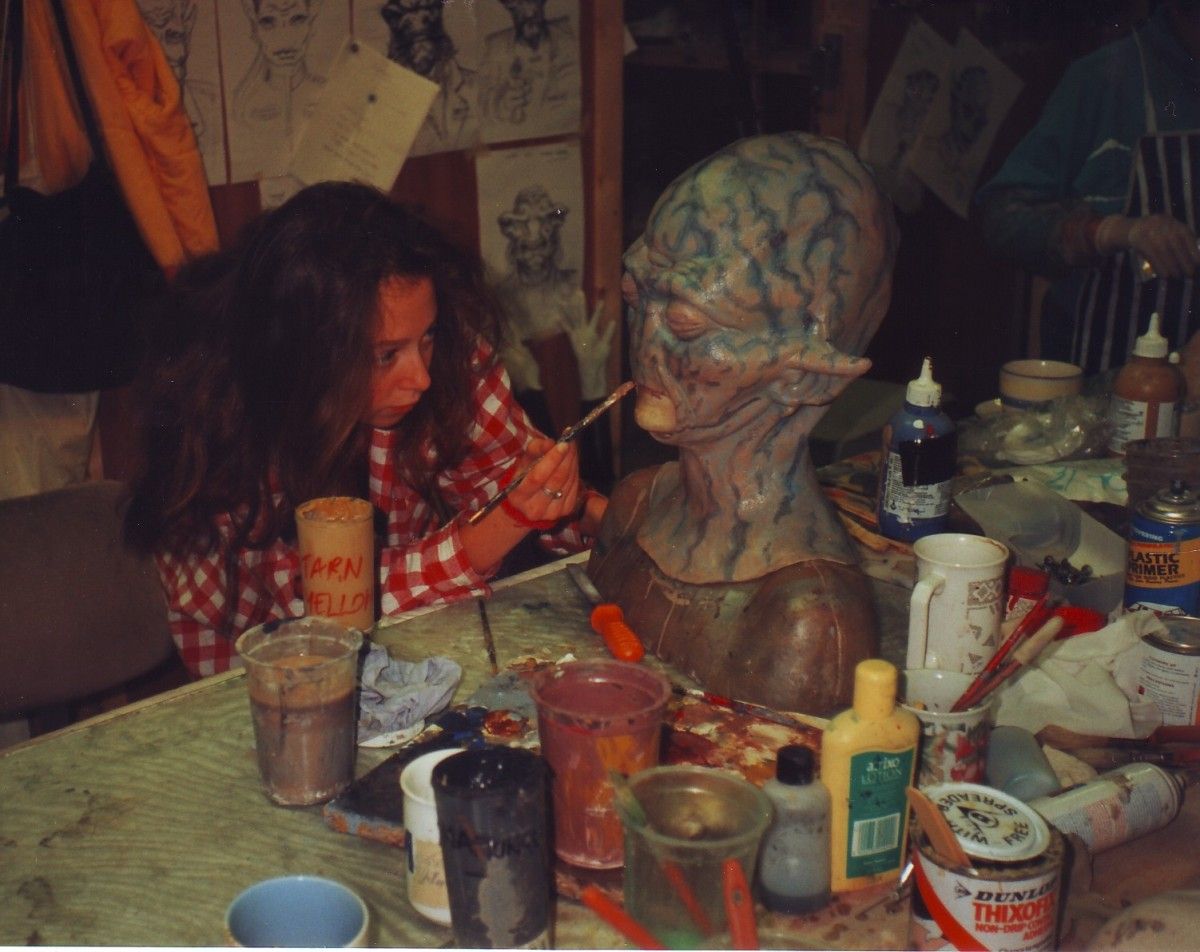
A selection of Creon and Tarn heads and remote controls in the workshop at Pinewood, 1994. You can see the full gallery at spaceprecinct.squarespace.com | Image Entertainment, 2010.
Meanwhile, at Shepperton, Gorton did any other creatures. “We were dubbed the alien of the week team,” he says. “Anything that was not Tarn or Creon, we did. [It was] a new challenge for every episode. We had to rethink what we were doing each time.”
Gerry Anderson, who loved technology, was an early adopter of video phones and tried to use a proto-version to link the two workshops. “We thought we could hold up sculptures and show them over this video phone,” laughs Gorton. “And it was terrible – pixelated, eight-bit…”


